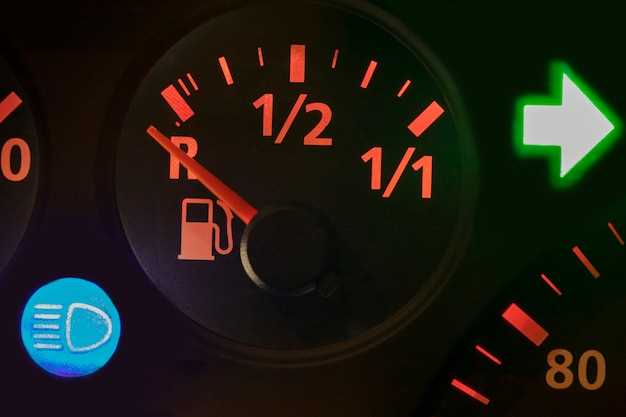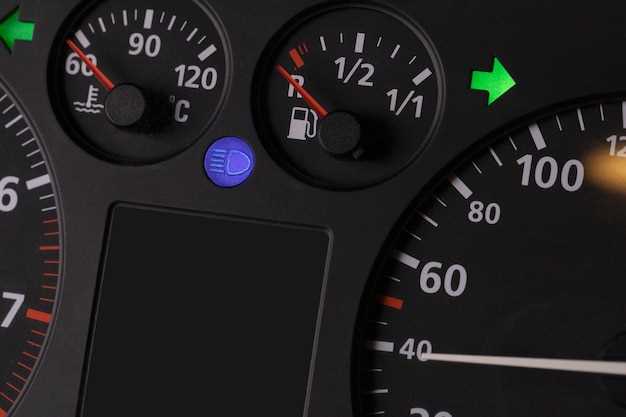
The intricate relationship between weather conditions and fuel efficiency is an often-overlooked aspect of vehicle performance. Various elements of weather, such as temperature, humidity, and precipitation, significantly influence how efficiently a vehicle uses fuel. Understanding these effects can help drivers make informed decisions, optimize fuel consumption, and reduce environmental impact.
Temperature plays a crucial role in determining a vehicle’s fuel efficiency. Cold weather can lead to increased fuel consumption as engines take longer to reach optimal operating temperatures. Additionally, during hot weather, the use of air conditioning can contribute to a significant drop in fuel efficiency. These temperature fluctuations impact not only the physical performance of engines but also the driving behavior of individuals.
Moreover, adverse weather conditions such as rain, snow, and wind can hinder vehicle performance, further affecting fuel efficiency. Wet or snowy roads result in increased rolling resistance and can lead to more frequent stops and starts, ultimately resulting in higher fuel consumption. Understanding these dynamics allows drivers to adapt their habits to mitigate the adverse impacts of different weather conditions on their vehicles.
How Temperature Variations Affect Engine Performance and Fuel Use
Temperature variations significantly impact engine performance and fuel efficiency, primarily due to the relationship between weather conditions and the combustion process. Cold temperatures lead to denser air, resulting in a richer fuel mixture necessary for optimal engine operation. This can improve combustion efficiency but also increases fuel consumption, negatively affecting the economy of the vehicle.
Additionally, cold engines require more energy to reach their optimal operating temperature. During this initial phase, fuel atomization is less effective, leading to incomplete combustion and higher emissions. Consequently, drivers may find that their vehicles consume more fuel when temperatures drop, especially during short trips where the engine never fully warms up.
On the other hand, high temperatures can also pose challenges for fuel efficiency. Hot weather may cause the engine to overheat if the cooling system is not adequately functioning. Overheating can lead to reduced engine performance and increased wear and tear, resulting in higher fuel consumption. Additionally, high temperatures can affect tire pressure, as warmer air expands within tires, leading to lower rolling resistance and, in some instances, decreased fuel efficiency if not monitored properly.
Moreover, elevated temperatures can enhance the rate of evaporative emissions, causing fuel vapors to escape rather than contributing to combustion. This loss of usable fuel again detracts from the vehicle’s economy, leading to higher overall fuel use and costs for motorists.
In summary, variations in temperature can have significant implications for engine performance and fuel use. Understanding these impacts allows drivers to manage their vehicles more effectively, maintain optimal performance, and ultimately improve fuel economy, regardless of the weather conditions they encounter.
The Role of Precipitation and Road Conditions on Fuel Economy

Precipitation significantly impacts fuel economy by altering road conditions and vehicle performance. Rain, snow, and ice create a slippery surface, which can lead to reduced traction. Vehicles often require more power to maintain stability, resulting in increased fuel consumption. Additionally, during rainy conditions, drivers tend to accelerate and decelerate more frequently to adapt to changing road traction, further decreasing fuel efficiency.
Moreover, wet roads may cause vehicles to hydroplane, risking loss of control and necessitating more cautious driving. This cautious approach often translates to increased stopping and starting, which is less efficient than consistent high-speed travel. Strategies for safer driving in inclement weather can inadvertently lead to poor fuel performance.
Road conditions also play a crucial role in fuel economy during precipitation. Potholes, ruts, and other road imperfections can hinder smooth driving. Uneven surfaces force drivers to adjust speed and trajectory, consuming more fuel as a result. Proper vehicle maintenance becomes essential, as ensuring tire pressure and tread depth can mitigate some negative effects of adverse weather conditions.
In summary, precipitation and poor road conditions lead to higher fuel consumption due to reduced traction, more frequent stops, and the need for safer driving practices. Understanding these factors can help drivers adapt their behaviors and potentially enhance fuel efficiency during adverse weather.
Wind Resistance and Its Influence on Fuel Consumption in Different Weather

Wind resistance, or aerodynamic drag, is a critical factor that significantly impacts fuel economy in vehicles. This resistance increases as the speed of the vehicle rises, necessitating more fuel to overcome the force of the wind. Different weather conditions, such as strong winds, can exacerbate this effect, leading to increased fuel consumption.
When driving against headwinds, vehicles must exert more energy to maintain speed, resulting in a noticeable drop in fuel efficiency. Studies have shown that even moderate winds can reduce fuel economy by up to 15%. Conversely, tailwinds can enhance fuel efficiency, allowing vehicles to travel more economically. However, the benefits are often offset by headwinds encountered during a journey.
Additionally, crosswinds can create complications; they may cause the vehicle to drift, requiring more constant steering adjustments. This added effort can further decrease fuel economy as the engine works harder to keep the vehicle on course. The impact of wind resistance is not uniform across all vehicles; those with a more aerodynamic design tend to suffer less from adverse weather than larger, boxier models.
To optimize fuel efficiency in various weather conditions, drivers should be conscious of their speed and route selection. Reducing speed can minimize the effects of wind resistance, leading to better fuel economy, especially in windy conditions. Keeping windows and sunroofs closed will also enhance aerodynamics, reducing overall drag.
In conclusion, understanding the influence of wind resistance on fuel consumption helps drivers make informed choices, ultimately improving fuel economy regardless of weather challenges. Addressing these factors proactively can have a positive impact on both vehicle performance and fuel efficiency.






